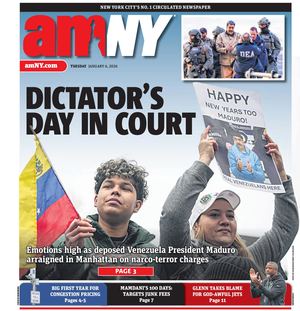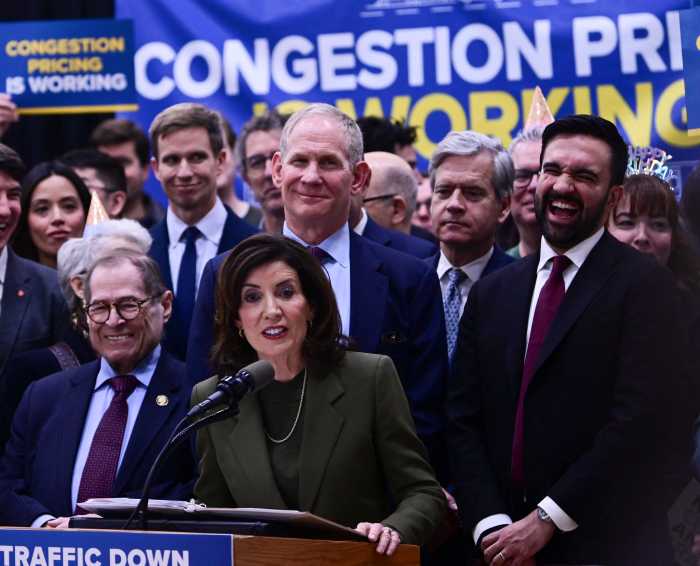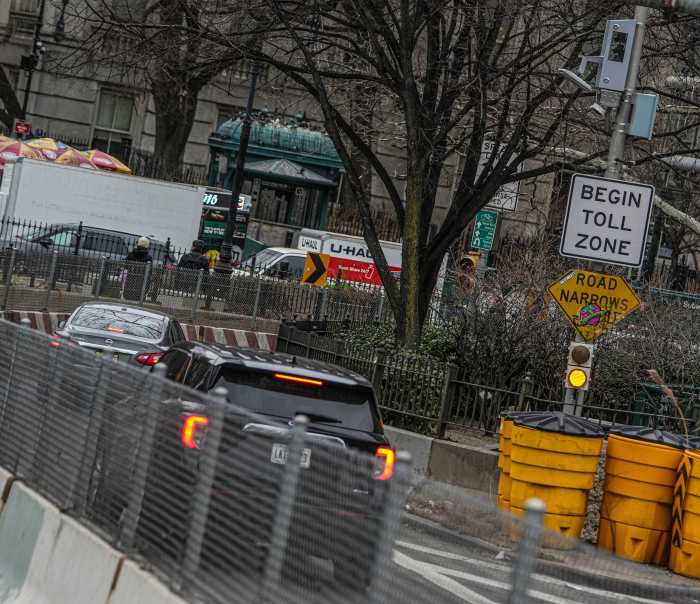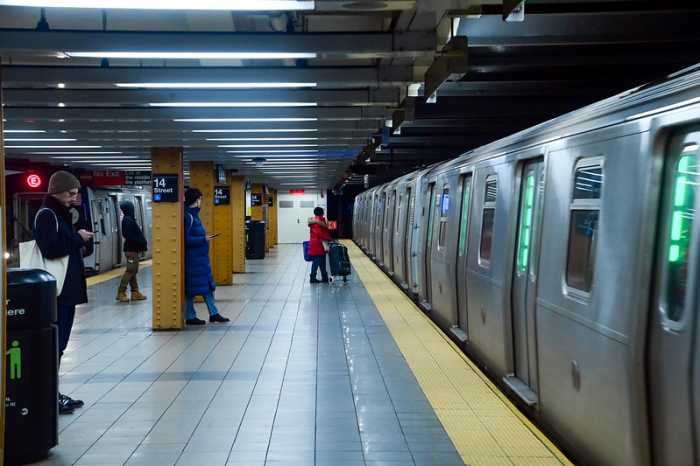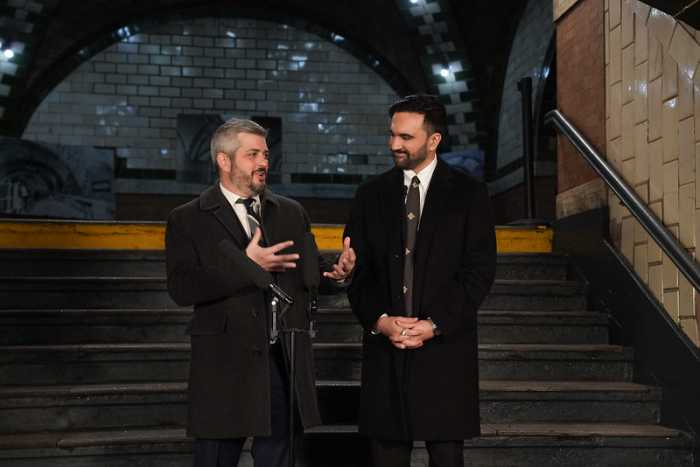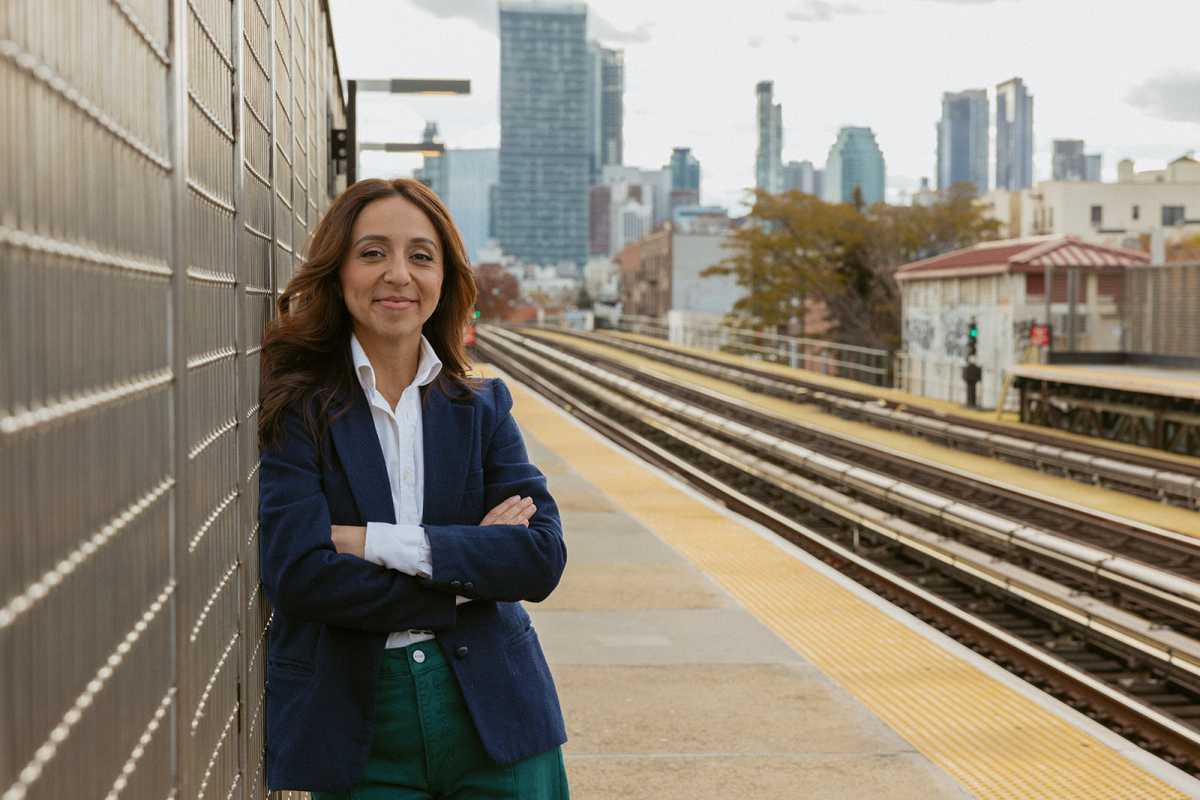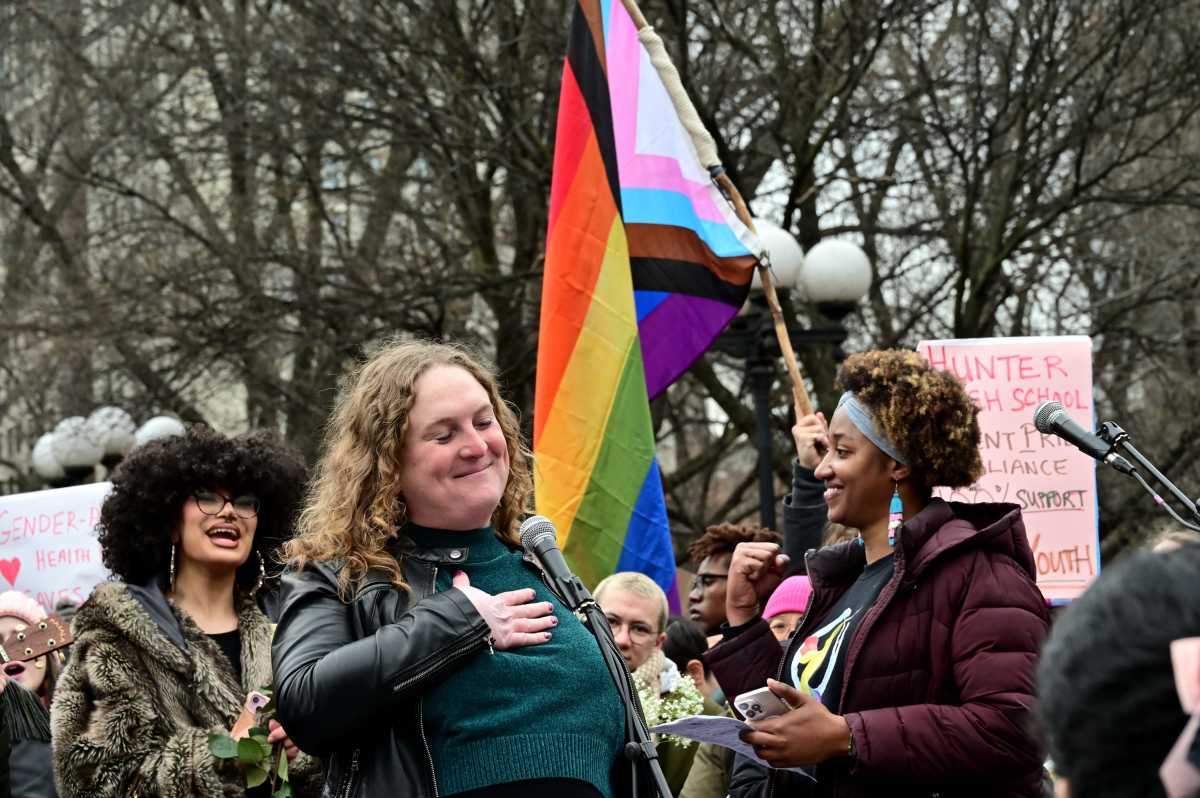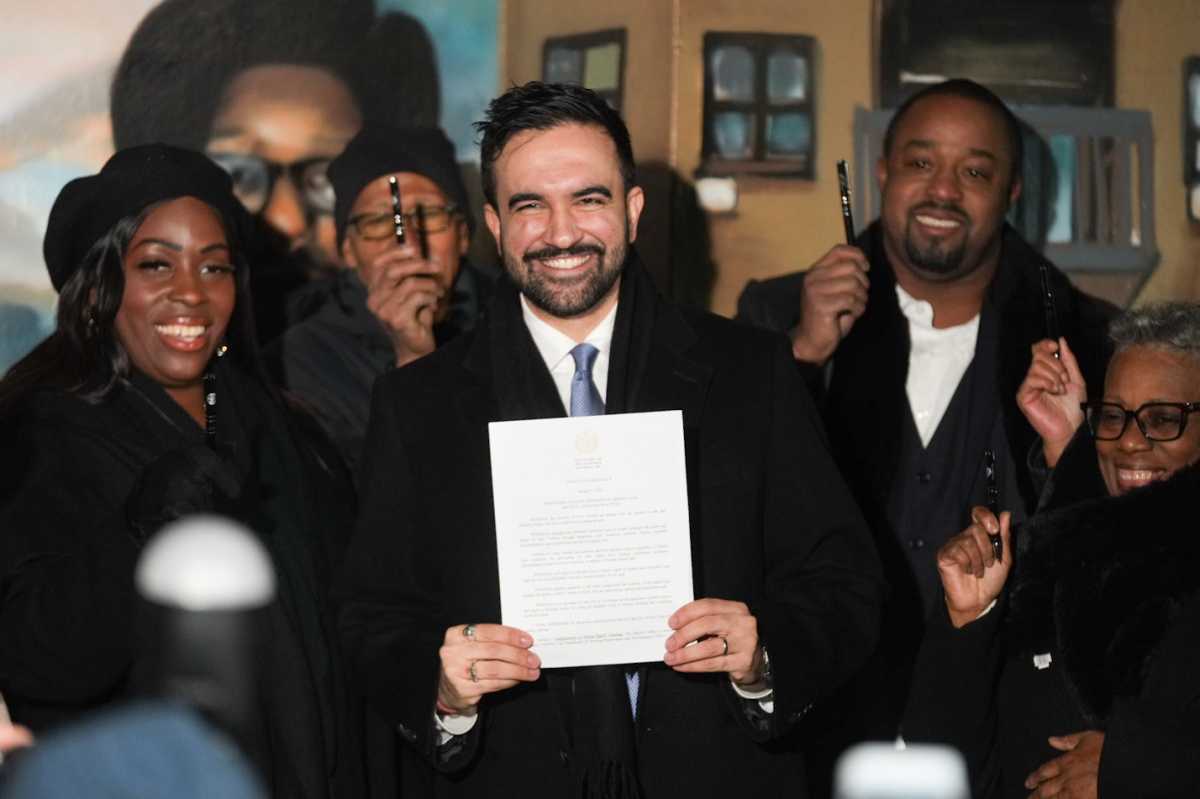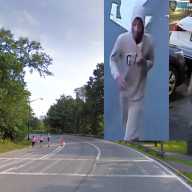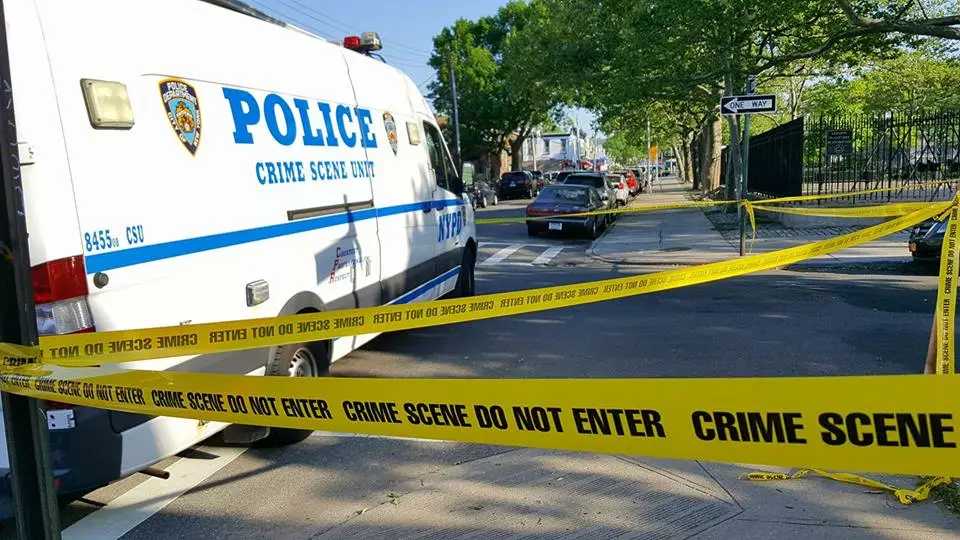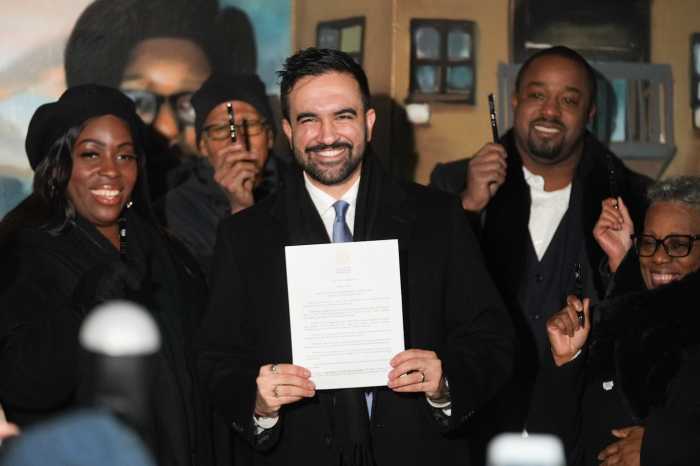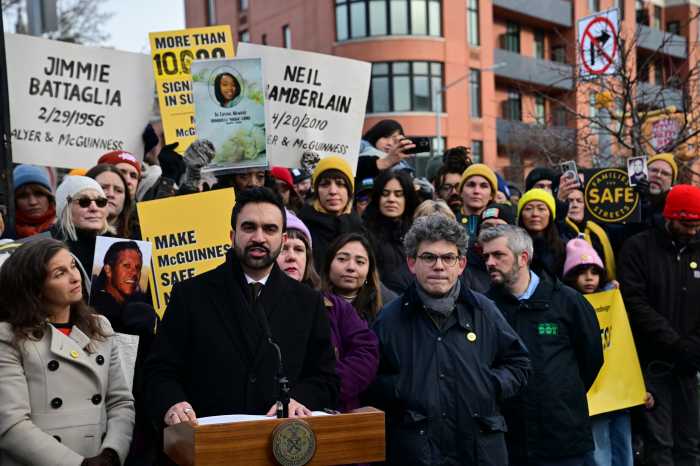Mayor Bill de Blasio will pledge during his State of the City address Thursday to drastically improve local bus speeds over the next two years to help revive the failing, unreliable service.
Faced with the slowest bus service among the nation’s big cities in addition to sharply declining ridership in recent years, the administration will vow to expand bus priority on streets; ramp up police enforcement of bus lanes and push Albany for state-controlled measures, such as camera enforcement.
With the combined efforts, the city aims to improve average bus speeds by 25 percent, from 7.44 miles per hour to 9.03 miles per hour by the end of 2020.
“Buses are a critical link in our public transportation system, and we’re doubling down on improvements to help get New Yorkers moving,” said de Blasio in a statement. “We look forward to working with the MTA to give our city the bus system it deserves.”
The state-run Metropolitan Transportation Authority saw a drop of almost 60 million bus trips from 2010 to 2016 — down from 697 million annual trips to 638 million — as average speeds trended down, with the mayor bearing much of the blame for not doing enough to accommodate buses on city streets. The administration now plans to more aggressively implement current strategies and try some new techniques to accelerate buses to faster speeds than the city has seen in at least 18 years.
“It is an ambitious goal,” said Polly Trottenberg, the city’s Department of Transportation commissioner, who noted that many of the efforts draw from recommendations from transit advocates.
“We know the city has a big role to play in trying to get buses moving faster and trying to turn around the decline in ridership,” she continued. “And I think what you’re hearing . . . is a really big commitment to do that.”
On the streets themselves, the administration will markedly increase the miles of bus lanes it installs each year from seven to between 10 and 15 miles per year. Each year, it will also tweak five miles of existing bus lanes with new design elements in addition to extending hours during which other vehicles are restricted from access.
This year the city will launch a small pilot to install up to two miles of physically separated bus lanes to keep cars from unlawfully blocking service. Though Trottenberg wouldn’t elaborate as to what the city will use to separate the lanes or where the lanes would be located.
The city currently has 111 miles of dedicated bus lanes, which critics point out are often blocked by idling or parked vehicles. To help keep that network of lanes clear, the mayor will establish for the first time dedicated tow truck teams within the Police Department. There will be seven towing teams patrolling the city, starting immediately, according to the mayor’s office.
De Blasio’s DOT will also more quickly roll out a technology that allows for buses to more expeditiously move through signaled intersections, known as traffic-signal priority, or TSP. The technology allows buses to communicate with traffic signals, allowing the signals to hold green lights longer for approaching buses or end red lights sooner to get buses rolling.
The city now plans to activate TSP for buses at 1,200 intersections by the end of 2020, up from a commitment of 1,000 intersections before.
The mayor will also advocate for the reinstatement of Select Bus Service after the MTA nixed the rollout of new SBS routes as part of a money-saving effort in its next budget.
Jon Orcutt, a spokesman for the advocacy group TransitCenter, welcomed the new commitments as “the best possible start to the new year for city bus riders” who “now have the mayor in their corner.”
Orcutt said it was critical to have new police enforcement, and appreciated that the mayor is making pledges with tangible goals.
“There’s a lot of measurable targets,” he said. “That, I think, speaks to the seriousness of what they’re proposing.”
Many of the initiatives the mayor is endorsing had also been called for in the MTA’s own proposal to improve bus service, which the authority’s Transit president, Andy Byford, had unveiled in his Bus Plan from April of last year.
“I welcome the Mayor’s support on initiatives we identified in our Bus Plan and Fast Forward Plan and have been working in close collaboration with our partners NYCDOT to implement,” Byford said in a statement. “We are also counting on the Mayor’s engagement for us to obtain the robust funding and community support we need to fully implement these plans which will bring benefits to millions of New Yorkers.”
